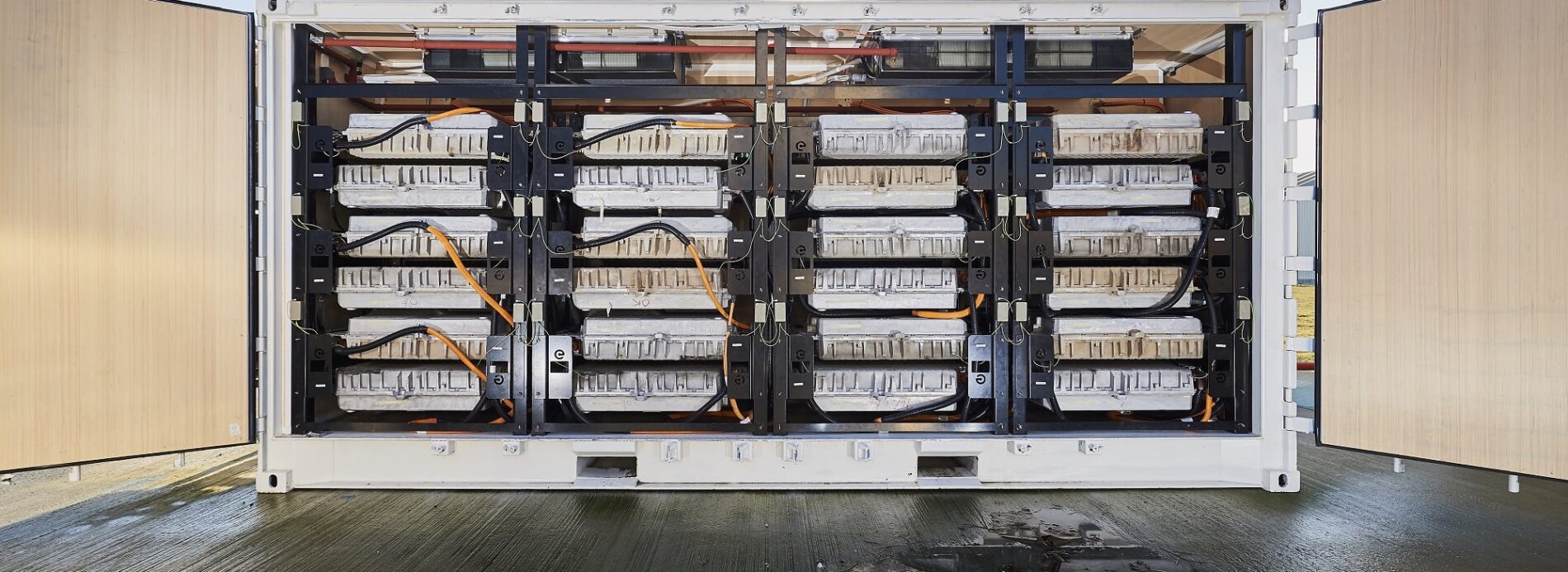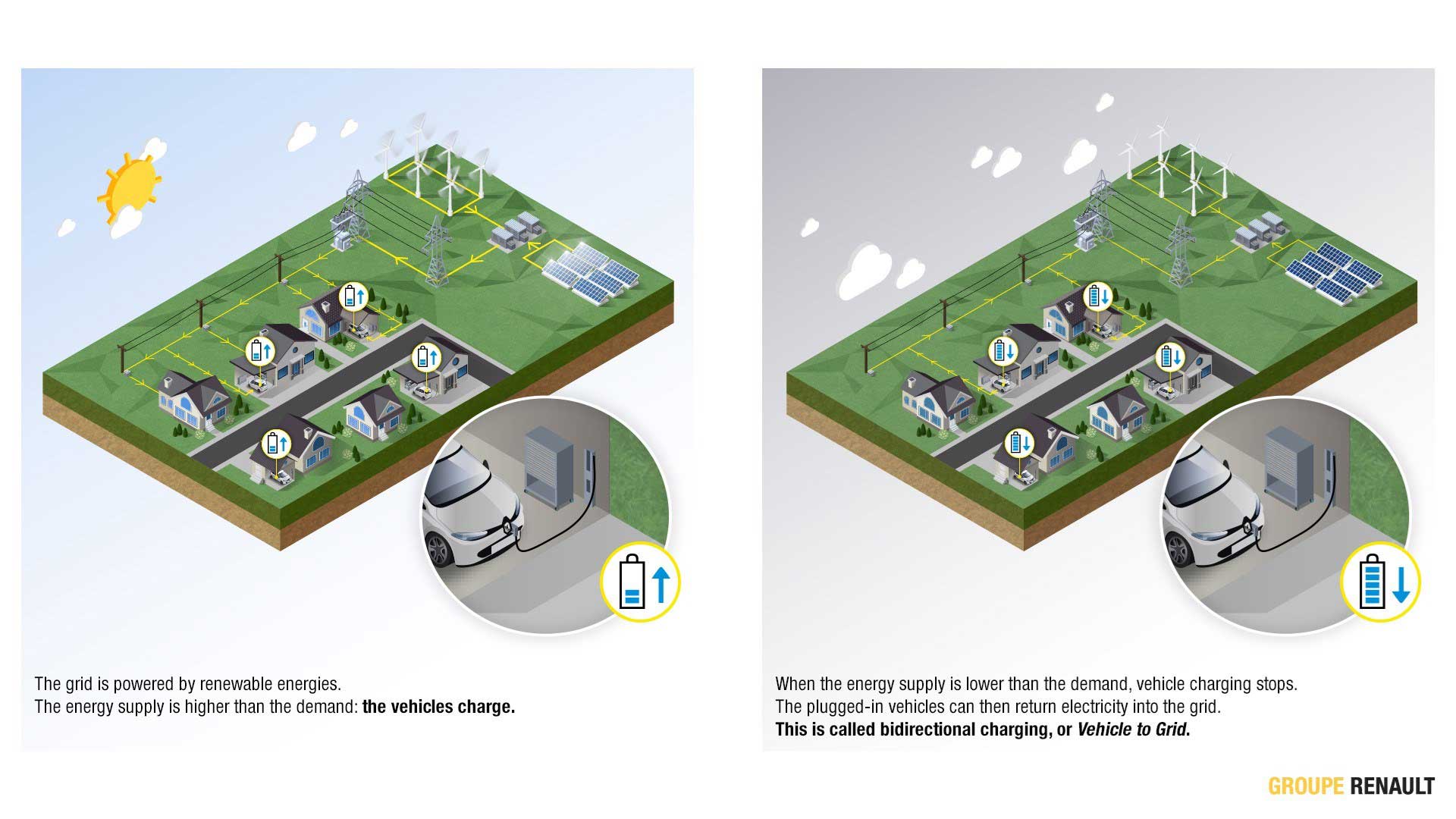A country’s electricity grid can source its energy from a fleet of vehicles as long as a large number are plugged in. The electric car therefore becomes a powerful potential energy storage solution. Here are the main principles and advantages of this innovative model.
Why stock electricity in a car?
Compared to primary energy sources, such as coal, gas and oil, electricity remains difficult to store, as there’s only a very short amount of time between its production and consumption. Technological developments can partially alleviate this problem: energy storage in the form of electricity becomes possible through improvements to batteries, especially those in electric cars. This is one of the missions of MOBILIZE, which designs and industrializes innovative energy storage solutions, notably through partnerships – such as the contract recently signed with the start-up betteries.
The rise of renewable energies entails disruptions in the production of electricity. When there isn’t enough wind to turn the turbines, or when the sun doesn’t shine, the energy produced diminishes. Storing energy at periods of high energy production in batteries, in order to then redistribute it during these “off-peak” phases, is a solution to these fluctuations.
This system is particularly interesting from an ecological standpoint: energy storage prevents thermal power stations from having to take the reins in the event of a cutoff in wind or solar power production. With regards to a national or regional electric network, the battery therefore presents a carbon-free solution. In addition, electric cars plugged into the grid offer the possibility of being used as storage; injecting current into the grid during off-peak periods. This technology is known as Vehicle-to-Grid (V2G).
The environmental advantages of energy storage
When thinking about the intelligent use of energy storage, aka the smart grid, V2G could offer multiple ecological advantages. Car connectors and public charging stations are able to exchange data, making it possible to regulate the charging of a vehicle depending on the electricity available across an entire grid.
The smart grid helps to optimize storage depending on the time of day or production levels. The batteries store “clean” energy — in other words low carbon — in order to anticipate these moments of underproduction. They therefore represent a sustainable solution.
V2G: when an electric car becomes an energy storage unit
Like their combustion-powered counterparts, electric cars spend a large part of the day parked. Through the use of “reversible” charging stations in particular, these stationary periods can benefit the electricity grid or the user. The driver arrives at work, parks their car and connects it to the power supply. The car’s integrated smart charging can then choose to fill up the battery when the electricity is low-carbon (and less expensive.) Conversely, when the battery is full, and a peak in consumption occurs, the reversibility of the charging station allows the grid to use a few kilowatts stored in the battery.
Based on this principle, and the existence of the smart grid, battery usage can be part of a strategy for optimizing energy use. The extra energy stored in electric vehicles is used at night when solar power plants do not produce any current. Spikes in demand are also anticipated so that cars plugged into the grid only charge at off-peak times, and that their electricity is available at the right time.
At the heart of smart cities, the V2G principle revolutionizes the use of the electric grid. As a counter to fluctuations in energy production, supply and demand, a car-sharing fleet — in which not all vehicles are used at the same time — becomes a kind of power station. Parked and charged vehicles provide the city with extra kilowatts at opportune times. This type of solution, still awaiting large-scale rollout, is being tested by Renault and its partners in Porto Santo (Portugal), a truly smart island.
The challenges of energy storage in electric cars
A solution for the future of energy conservation and optimized low-carbon electricity distribution, Vehicle-to-Grid still has to overcome some technological and institutional obstacles. Currently in the experimentation phase, V2G will enter the industrialization phase in the years to come, subject to a solution that works for everyone involved. Why not, for example, pay voluntary drivers to let the grid draw from their batteries? This process could completely reinvent the use of the electric car.
V2G works together with increasingly advanced lithium-ion batteries, which can still have several uses after their automotive role (in a “second life”), which extends their life cycle and places them within a truly circular economy, before finally being recycled. These solutions are favored by manufacturers such as Groupe Renault as well as energy specialists — parties who are actively participating in the advent of low-carbon electricity production and mobility as part of their response to the global challenge of reducing CO2 emissions.
Copyrights : Renault Communication

